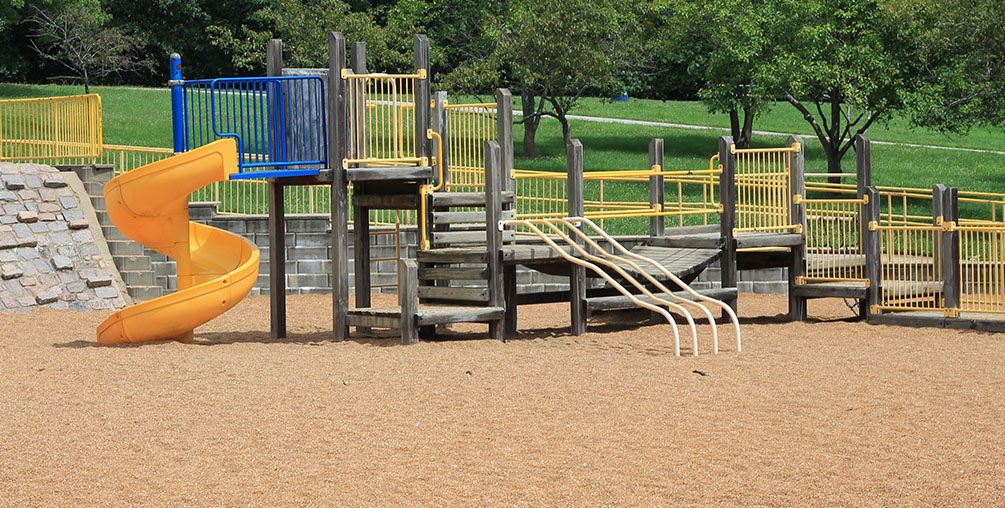Is Pea Gravel a Safe Surface for Your Playground?
Pea gravel is a loose-filled playground surface made up of small, polished pebbles that are typically round and consistent in size. Its inability to comply with ADA standards eliminates it as an option for public and commercial playgrounds, but it is still used by homeowners and many private institutions.
How it Scores on 7 Key Criteria
Aside from its low cost and long life, pea gravel gets a very poor overall grade as a playground surfacing because its safety, cleanliness and accessibility scores are so low. Read more for specific details about how pea gravel performs on these 7 key criteria. Learn more about the details of the evaluation criteria.
Safety
Cleanliness
Care & Maintenance
ADA Compliance & Accessibility
Aesthetics & Design
Installation Cost
Lifetime Cost
Pea Gravel
Safety

Safety Rating:
From an impact resistance point of view, pea gravel surfaces can be designed to meet the ASTM standards for many fall heights, but many varieties will compact significantly over time minimizing their impact absorbing qualities.
- Does not support microbial growth
- Can hide dangerous foreign objects
- Can be thrown or scattered onto nearby walkways and surfaces causing slipping hazards
- High humidity and cold temperatures reduce its effectiveness
Not only does pea gravel lack the safety characteristics of other surfacing options, but kids love to play with it, eat it, throw it and generally make a mess with it.
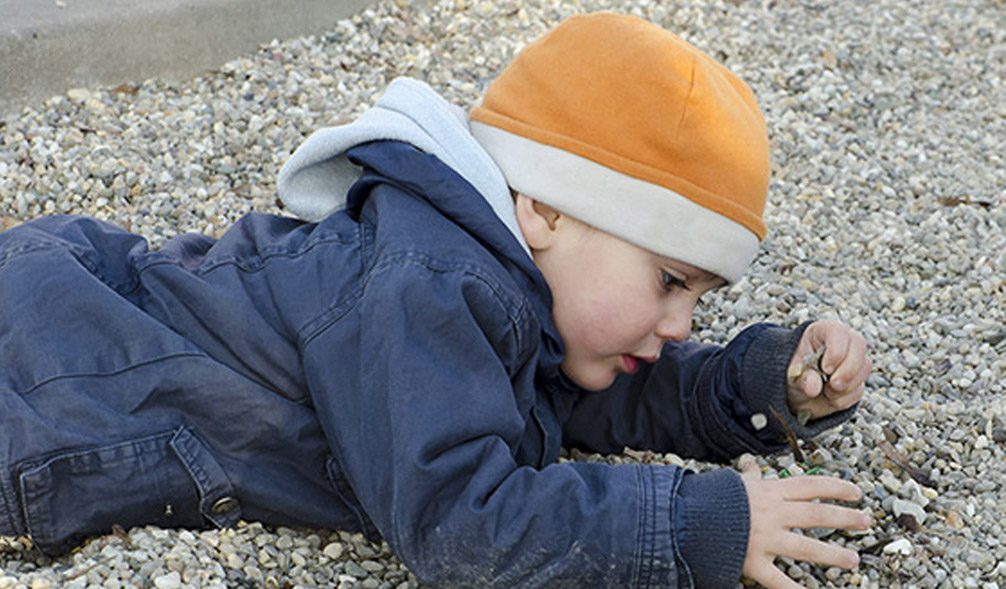
Pea Gravel
Cleanliness

Cleanliness Rating:
When it comes to keeping children clean, pea gravel is one of the cleaner loose fill material options. Unfortunately, many people note that children have an inherent desire to pile, gather, throw, kick, pour and scatter the gravel everywhere possible. Buckets are even used to transfer the tiny rocks to the top of slides so that “pebble falls” can be created. This can make it very difficult to keep the equipment and area surrounding the playground clean. Other than that...
- It does not stain clothes
- It does not support bacteria, mold and mildew
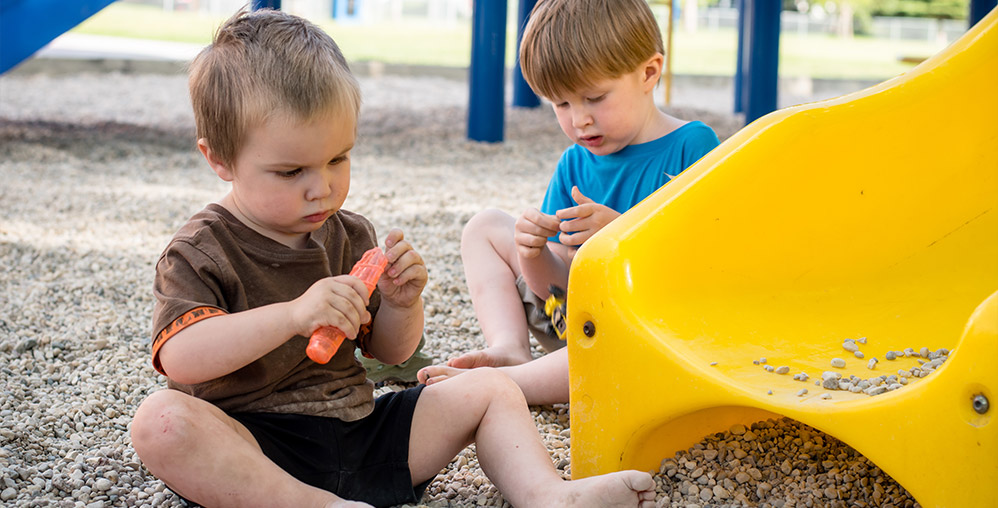
Pea Gravel
Care & Maintenance

Maintenance Rating:
Keeping pea gravel depths high enough to comply with fall height requirements requires constant raking and leveling. The pea gravel also needs to be inspected for debris and compacted areas needs to be sifted to keep its impact absorbing qualities active.
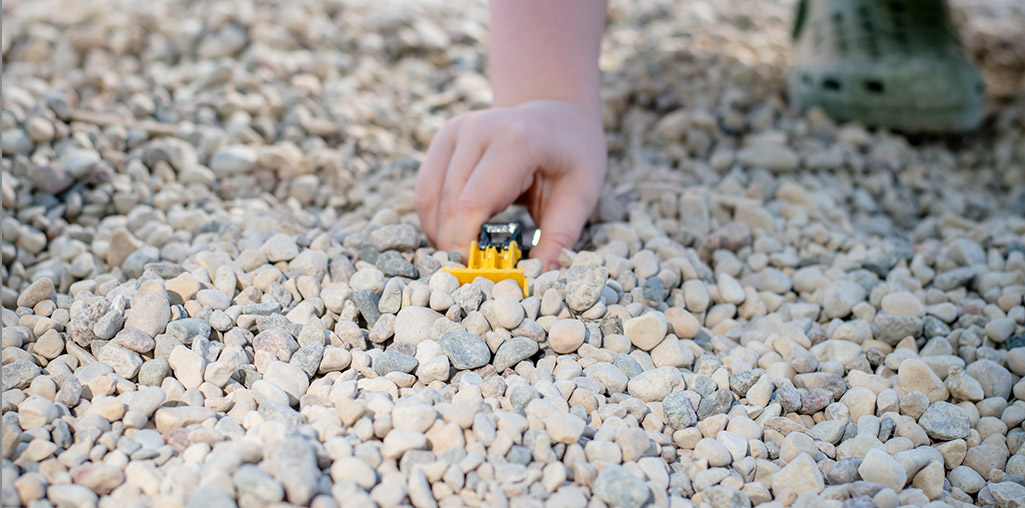
Pea Gravel
ADA Compliance & Accessibility

Accessibility Rating:
Pea gravel does not meet ADA requirements for wheelchair accessibility and consequently should not be used on commercial or public playgrounds.

Pea Gravel
Aesthetics & Design

Aesthetics Rating:
As a natural material, pea gravel can be used effectively on backyard playgrounds where integrating with the environment is a key element. However, it lacks many other qualities that make it interesting to designers.
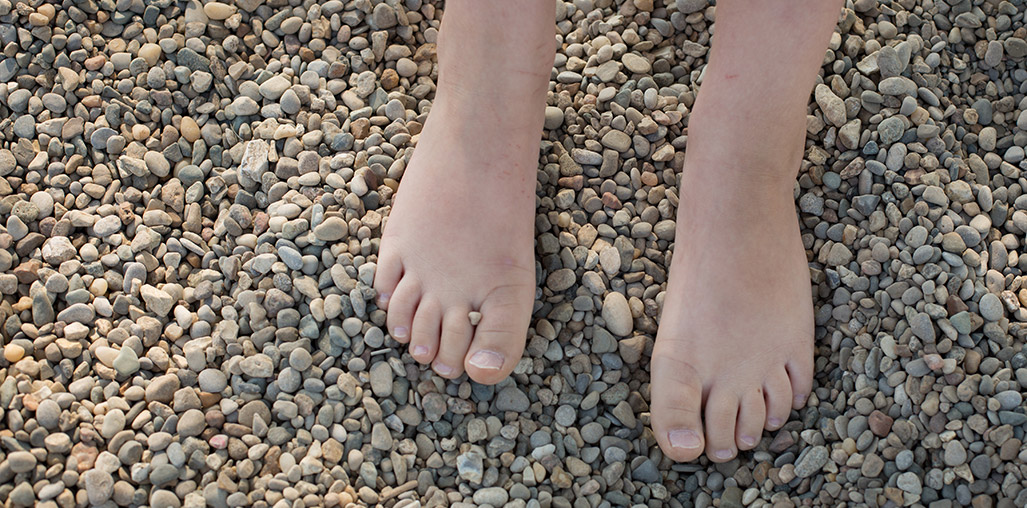
Pea Gravel
Installation Cost

Installation Cost Rating:
Pea gravel surfacing is relatively simple to install and initially cost-effective as it is a widely available material. Typically, all one needs to do is prepare the area, dump in the pea gravel and rake to the desired depth.
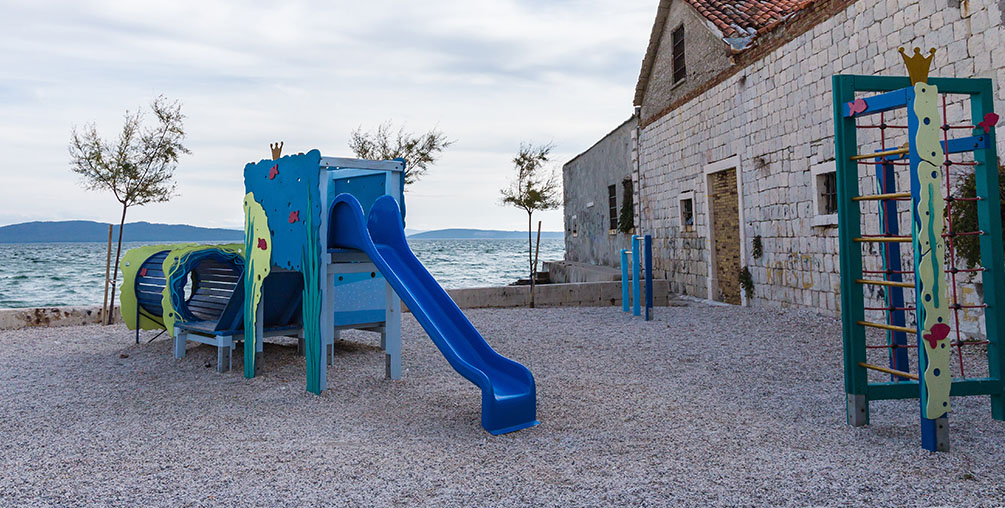
Pea Gravel
Lifetime Costs

Lifetime Cost Rating:
While initially inexpensive, costs for pea gravel can add up over the lifetime of the playground. As with other loose-fill materials, pea gravel must be frequently inspected for foreign objects and consistent depth of material. There is also the risk that it forms into hardpan when it compacts. In addition to these ongoing maintenance costs, pea gravel may need to be replaced every few years to remain effective.
